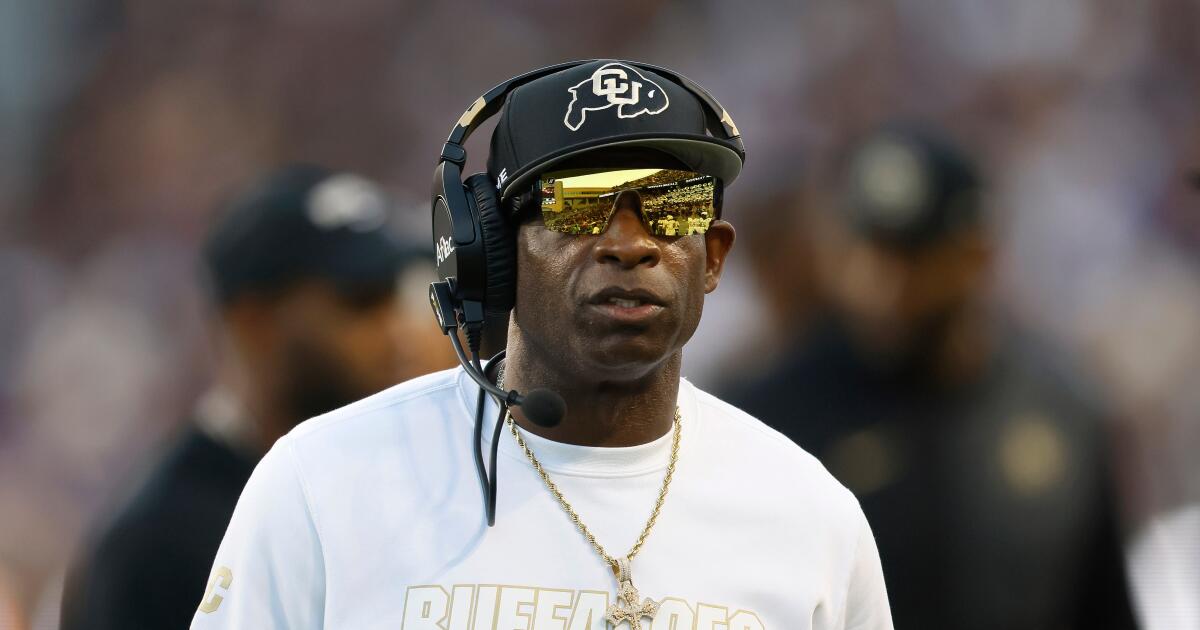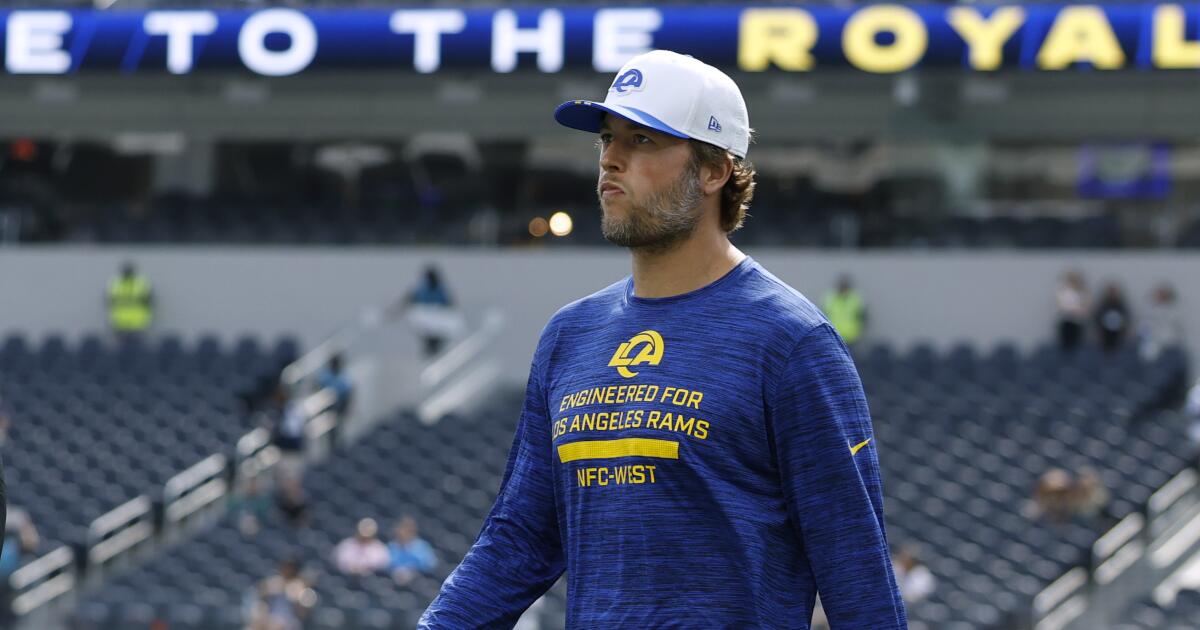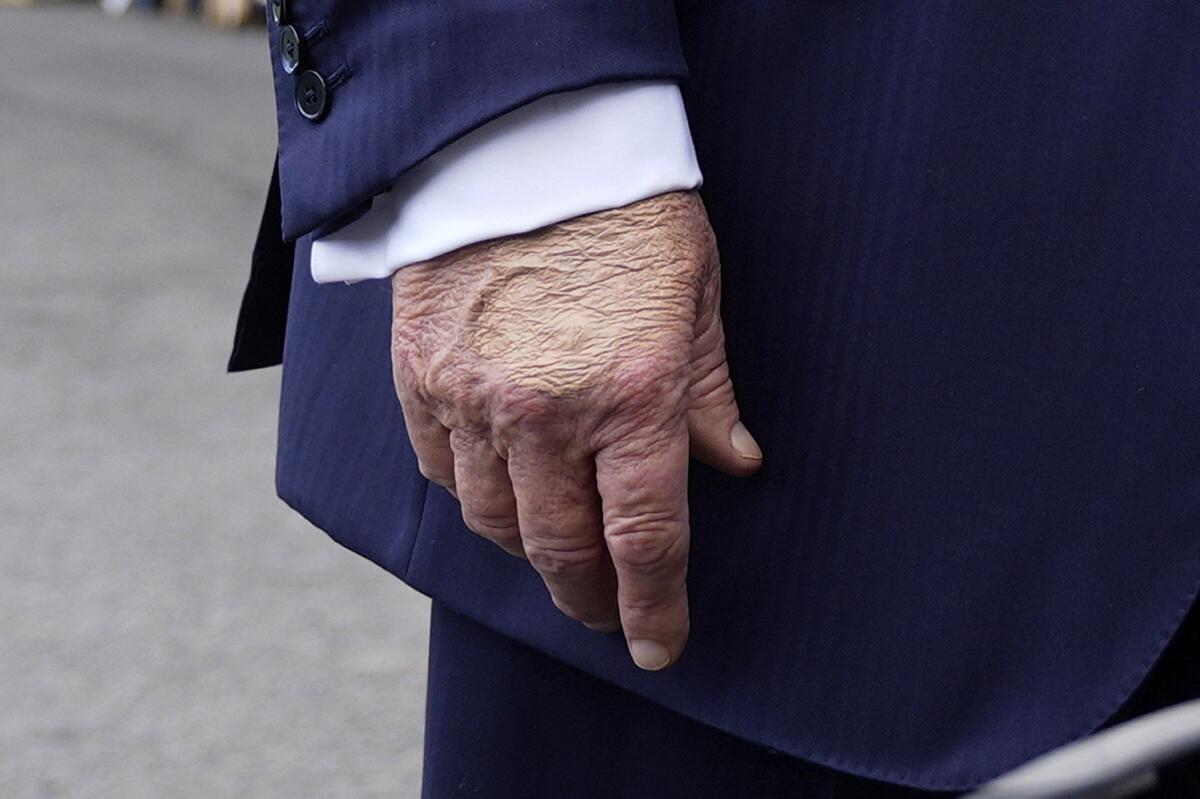Deion Sanders at Colorado football practice 16 hours after surgery
Colorado coach Deion Sanders returned to Buffaloes football practice Wednesday — just as Coach Prime said he would 24 hours earlier when he announced he would be undergoing a surgical procedure later that day related to blood clot issues.
A video posted by his eldest son, Deion Sanders, Jr., on his “Well Off Media” YouTube channel Wednesday starts with a clip of Sanders going into surgery. Then, after indicating a 16-hour time jump, the video shows Sanders walking briskly, if perhaps a little gingerly, through the Buffaloes’ indoor practice facility. He is offered a cart but apparently turns it down.
Much of the rest of the eight-minute video shows clips from the team’s practice. Sanders stays on the move, with his walking appearing a bit more labored as practice continues. Sanders is not seen at what appears to be the end of practice, as another coach addresses the players.
A spokesperson for Colorado football told The Times on Wednesday afternoon that the team expects Sanders to coach the Buffaloes on Saturday during their home game against No. 22 Iowa State.
No other information has been released on the surgery or Sanders’ condition.
During his weekly news conference Tuesday, Sanders revealed he’d be undergoing the surgical procedure — called an aspiration thrombectomy, which involves the left popliteal (located behind the knee) and tibial arteries — later that day. He said the surgery could take several hours.
“I’m going to be all right,” Sanders said. “Prayerfully, I’ll be right back tomorrow because I don’t miss practice. I don’t plan on doing such.”
On Saturday, Sanders could be seen either sitting down or limping around on the Buffaloes sideline during Colorado’s 35-21 loss to Texas Christian. He didn’t wear a shoe on his left foot during the second half and afterward told reporters he was “hurting like crazy.”
“I think I’ve got more blood clots,” said Sanders, who had two toes amputated on his left foot in 2021 because of blood clot issues and had a blood clot removed from his right leg in 2023. “I’m not getting blood to my leg. That’s why my leg is throbbing.”
The surgical procedure is said to be Sanders’ 16th in the last three years. He told reporters Tuesday that his struggles with blood clots are hereditary.
This summer, Sanders revealed that his bladder had been removed in May to address a cancerous tumor.
Janet Kukreja, Sanders’ doctor at the University of Colorado Cancer Center, told reporters at the same news conference that a section of Sanders’ intestine was reconstructed to function as a bladder and that the procedure was a success. She added that Sanders would not need radiation or chemotherapy treatments.
Sanders was a superstar cornerback in the NFL, playing for five teams over 14 years and winning two Super Bowls (with the San Francisco 49ers and the Dallas Cowboys). The 1994 defensive player of the year was an eight-time Pro Bowl selection and was inducted into the Pro Football Hall of Fame in 2011.
As coach at Jackson State from 2020 to 2022, Sanders led the Tigers to two Southwestern Athletic Conference titles and was named the SWAC coach of the year twice. He is in his third season at Colorado, where he has coached such stars at 2024 Heisman Trophy winner Travis Hunter (now with the Jacksonville Jaguars) and son Shedeur Sanders (now with the Cleveland Browns).
The Associated Press contributed to this report.


